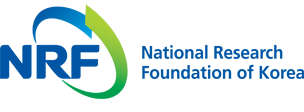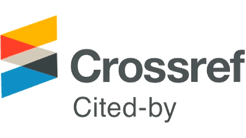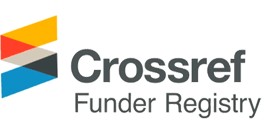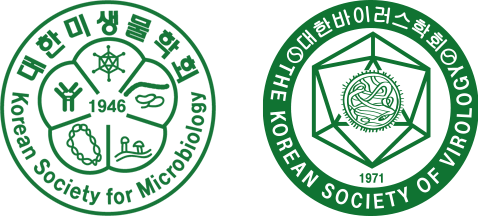Review Article
Mancuso M, Rappazzo AC, Genovese M, El Hady M, Ghonimy A, Ismail M, et al. In vitro selection of bacteria and isolation of probionts from farmed Sparus aurata with potential for use as probiotics. Int J Anim Biol. 2015;1(4):93-98.
El-Saadony MT, Alagawany M, Patra AK, Kar I, Tiwari R, Dawood MAO, et al. The functionality of probiotics in aquaculture: an overview. Fish Shellfish Immunol. 2021;117:36-52.
10.1016/j.fsi.2021.07.00734274422Dash S, Das SK, Samal J, Thatoi HN. Epidermal mucus, a major determinant in fish health: a review. Iran J Vet Res. 2018;19(2):72-81.
Rizzo C, Gugliandolo C, Giudice AL. Exploring Mediterranean and Arctic environments as a novel source of bacteria producing antibacterial compounds to be applied in aquaculture. Appl Sci. 2020;10(11):4006.
10.3390/app10114006Santajit S, Indrawattana N. Mechanisms of antimicrobial resistance in ESKAPE pathogens. Biomed Res Int. 2016;2475067.
10.1155/2016/247506727274985PMC4871955Venkateswaran P, Vasudevan S, David H, Shaktivel A, Shanmugam K, Neelakantan P, et al. Revisiting ESKAPE pathogens: virulence, resistance, and combating strategies focusing on quorum sensing. Front Cell Infect Microbiol. 2023;13:1159798.
10.3389/fcimb.2023.115979837457962PMC10339816Lazado CC, Caipang CM. Mucosal immunity and probiotics in fish. Fish Shellfish Immunol. 2014;39(1):78-89.
10.1016/j.fsi.2014.04.01524795079Bunnoy A, Na-Nakorn U, Kayansamruaj P, Srisapoome P. Acinetobacter strain KUO11TH, a unique organism related to Acinetobacter pittii and isolated from the skin mucus of healthy bighead catfish and its efficacy against several fish pathogens. Microorganisms. 2073;7(11):549.
10.3390/microorganisms711054931717696PMC6920915Mulani MS, Kamble EE, Kumkar SN, Tawre MS, Pardesi KR. Emerging strategies to combat ESKAPE pathogens in the era of antimicrobial resistance; a review. Front Microbiol. 2019;10:539.
10.3389/fmicb.2019.0053930988669PMC6452778Leonora FHSV, Boonyarat VDS, Pugoy JJ, Chiong AES, Polido MA IV, Caipang CMA. Bacteriophages in the fish mucosa: updates on their biology, interactions, and applications. Biologia. 2024;79(6):1861-1873.
10.1007/s11756-024-01646-0Bragadeeswaran S, Thangaraj S. Hemolytic and antibacterial studies on skin mucus of eel fish, Anguilla anguilla Linnaeus, 1758. Asian J Biol Sci. 2011;4(3):272-276.
10.3923/ajbs.2011.272.276Brinchmann MF. Immune relevant molecules identified in the skin mucus of fish using -omics technologies. Mol Biosyst. 2016;12(7):2056-2063.
10.1039/C5MB00890E27173837Ivanova L, Rangel-Huerta OD, Tartor H, Gjessing MC, Dahle MK, Uhlig S. Fish skin and gill mucus: a source of metabolites for non-invasive health monitoring and research. Metabolites. 2022;12(1):28.
10.3390/metabo1201002835050150PMC8781917Hedmon O, Jacqueline A, Koffi KT, Drago KC, Engeu OP. Fish mucus: a neglected reservoir for antimicrobial peptides. Asian J Pharm Res Dev. 2018;6(4):6-11
10.22270/ajprd.v6i4.389Giacomello E, Marchini D, Rasotto MB. A male sexually dimorphic trait provides antimicrobials to eggs in blenny fish. Biol Lett. 2006;2(3):330-333.
10.1098/rsbl.2006.049217148395PMC1686180Esteban MA. An overview of the immunological defenses in fish skin. ISRN Immunology. 2012;853470.
10.5402/2012/853470Gomez D, Sunyer JO, Salinas I. The mucosal immune system of fish: the evolution of tolerating commensals while fighting pathogens. Fish Shellfish Immunol. 2013;35(6):1729-1739.
10.1016/j.fsi.2013.09.03224099804PMC3963484Tiralongo F, Messina G, Lombardo BM, Longhitano L, Voltt GL, Tibullo D. Skin mucus of marine fish as a source for the development of antimicrobial agents. Front Mar Sci. 2020;7:541853.
10.3389/fmars.2020.541853Larsen A, Tao Z, Bullard SA, Arias CR. Diversity of the skin microbiota of fishes: evidence for host species specificity. FEMS Microbiol Ecol. 2013;85(3):483-494.
10.1111/1574-6941.1213623607777Carda-Dieguez M, Ghai R, Rodriguez-Valera F, Amaro C. Wild eel microbiome reveals that skin mucus of fish could be a natural niche for aquatic mucosal pathogen evolution. Microbiome. 2017;5(1):162.
10.1186/s40168-017-0376-129268781PMC5740887Petersen C, Round JL. Defining dysbiosis and its influence on host immunity and disease. Cell Microbiol. 2014;16(7):1024-1033.
10.1111/cmi.1230824798552PMC4143175Clinton M, Wyness AJ, Martin SAM, Brierly AS, Ferrier DEK. Sampling the fish gill microbiome: a comparison of tissue biopsies and swabs. BMC Microbiol. 2021;21(1):313.
10.1186/s12866-021-02374-034758745PMC8579561Lowrey L, Woodhams DC, Tacchi L, Salinas I. Topographical mapping of the rainbow trout (Oncorhynchus mykiss) microbiome reveals a diverse bacterial community with antifungal properties in the skin. Appl Environ Microbiol. 2015;81(19):6915-6925.
10.1128/AEM.01826-1526209676PMC4561705Yu YY, Ding LG, Huang ZY, Xu HY. Xu Z. Commensal-bacteria-immunity crosstalk shapes mucosal homeostasis in teleost fish. Rev Aquac. 2021;13(4):2322-2343.
10.1111/raq.12570Santoso HB, Suhartono E, Yunita R, Biyatmoko D. Epidermal mucus as a potential biological matrix for fish health analysis. Egypt J Aquat Biol Fish. 2020;24(6):361-382.
10.21608/ejabf.2020.114402Fernandez-Alacid L, Sanahuja I, Ordonez-Grande B, Sanchez-Nuño S, Viscor G, Gisbert E, et al. Skin mucus metabolites in response to physiological challenges: A valuable non-invasive method to study teleost marine species. Sci Total Environ. 2018;644:1323-1335.
10.1016/j.scitotenv.2018.07.08330743845Azaldin NA, Azmi L, Jamali MAM, Ismail INA. Antimicrobial activity of eel mucus: a review. Malaysian J Sci Health Technol. 2023;9(2):164-173.
10.33102/mjosht.v9i2.363Subramanian S, Ross NW, MacKinnon SL. Comparison of antimicrobial activity in the epidermal mucus extracts of fish. Comp Biochem Physiol B Biochem Mol Biol. 2008;150(1):85-92.
10.1016/j.cbpb.2008.01.01118342561Del Rosario M, De la Torre H, Reyes D, Noboa A, Salazar L, Marcillo E, et al. Presence of antimicrobial activity in the mucus of chame fish (Dormitator latifrons). J Pure Appl Microbiol. 2012;6(4):1615-1622.
Dhanaraj M, Haniffa MA, Arun Singh SV, Muthu Ramakrishnan C, Manikaandaraja D, James Milton M. Antibacterial activity of skin and intestinal mucus of five different freshwater fish species Viz., Channa striatus, C. micropeltes, C. marulius, C. punctatus, and C. gachua. Malaysian J Sci. 2009;28(3):257-262.
10.22452/mjs.vol28no3.3Kuppulakshmi C, Prakash M, Gunasekaran G, Manimegalai G, Sarojini S. Antibacterial properties of fish mucus from Channa punctatus and Cirrhinus mrigala. Eur Rev Med Pharmacol Sci. 2008;12(3):149-153.
Wei OY, Xavier R, Marimuthu K. Screening of antibacterial activity of mucus extract of snakehead fish, Channa striatus (Bloch). Eur Rev Med Pharmacol Sci. 2010;14(8):675-681.
Hussain A, Sachan SG. Evaluation of the antimicrobial efficacy of epidermal mucus extract from air-breathing fish (Channa punctatus) and identification of the peptides serving as immune components. Int J Pept Res Ther. 2024;30:4.
10.1007/s10989-023-10581-8Lirio GAC, De Leon JAA, Villafuerte AG. Antimicrobial activity of epidermal mucus from top aquaculture fish species against medically-important pathogens. Walailak J Sci Tech. 2018;16(5):329-340.
10.48048/wjst.2019.6287Pethkar MR, Lookhande MV. Antifungal activity of skin mucus of three cultivable fish species (Catla catla, Cirrhinus mrigala and Anguilla anguilla). Int J Zool Stud. 2017;2(6):1-3.
Ikram MNNK, Ridzwan BH. A preliminary screening of antifungal activities from skin mucus extract of Malaysian local swamp eel (Monopterus albus). Int Res J Pharm Pharmacol. 2013;3(1):1-8.
Hilles AR, Mahmood S, Hashim R. Evaluation of the antibacterial activity of skin mucus from Asian swamp eel (Monopterus albus). Indian J Geo Mar Sci. 2019;48(12):1855-1859.
Ali S, Shah SAUR, Rauf M, Hassan M, Ullah W, Dawar FU. Bactericidal role of epidermal mucus of freshwater fish treated with Aeromonas hydrophila. J Fish Dis. 2023;46(11):1225-1237.
10.1111/jfd.1384137501533Balasubramanian S, Rani BP, Prakash AA, Prakash M, Senthilraja P, Gunasekaran G. Antimicrobial properties of skin mucus from four freshwater cultivable fishes (Catla catla, Hypophthalmichthys molitrix, Labeo rohita and Ctenopharyngodon idella). African J Microbiol Res. 2012;6(24):5110-5120.
Sajorne RE, Mabuhay-Omar JA. Antimicrobial property of the epidermal mucus of tilapia Oreochromis spp. Palawan Sci. 2020;12:43-60.
10.69721/TPS.J.2020.12.1.03Hilles AR, Mahmood S, Waly MI, Kaderi MA, Ahmed QU, Azmi SNH, et al. The therapeutic potential of skin mucus from Asian swamp eel (Monopterus albus): In vivo evaluation and histological evidence. J King Saud Univ Sci. 2022;34(4):102011.
10.1016/j.jksus.2022.102011Patel M, Ashraf MS, Siddiqui AJ, Ashraf SA, Sachidanandan M, Snoussi M, et al. Profiling and role of bioactive molecules from Puntius sophore (freshwater/brackish fish) skin mucus with its potent antibacterial, antiadhesion, and antibiofilm activities. Biomolecules. 2020;10(6):920.
10.3390/biom1006092032560562PMC7355610Leng W, Wu X, Xiong Z, Shi T, Sun Q, Yuan L, et al. Study on antibacterial properties of mucus extract of snakehead (Channa argus) against Escherichia coli and its application in chilled fish fillets preservation. LWT. 2022;167(2):113840.
10.1016/j.lwt.2022.113840Wang H, Tang W, Zhang R, Ding S. Analysis of enzyme activity, antibacterial activity, antiparasitic activity and physico-chemical stability of skin mucus derived from Amphiprion clarkii. Fish Shellfish Immunol. 2019;86:653-661.
10.1016/j.fsi.2018.11.06630502467Vennila R, Kumar KR, Kanchana S, Arumugam M, Vijayalakshmi S, Balasubramaniam T. Preliminary investigation on antimicrobial and proteolytic property of the epidermal mucus secretion of marine stingrays. Asian Pac J Trop Biomed. 2011;1(2):S239-243.
10.1016/S2221-1691(11)60162-7Fuochi V, Li Volti G, Camiolo G, Tiralongo F, Giallongo C, Distefano A, et al. Antimicrobial and anti-proliferative effects of skin mucus derived from Dasyatis pastinaca (Linnaeus, 1758). Mar Drugs. 2017;15(11):342.
10.3390/md1511034229104260PMC5706032Stevens JL, Jackson RL, Olson JB. Bacteria associated with lionfish (Pterois volitans/miles complex) enhibit antibacterial activity against known fish pathogens. Mar Ecol Prog Ser. 2016;558:167-180.
10.3354/meps11789Go HJ, Kim CH, Park JB, Kim TY, Lee TK, Oh HY, et al. Biochemical and molecular identification of a novel hepcidin type 2-like antimicrobial peptide in the skin mucus of the pufferfish (Takifugu pardalis). Fish Shellfish Immunol. 2019;93:683-693.
10.1016/j.fsi.2019.08.01731408729Ebran N, Julien S, Orange N, Auperin B, Molle G. Isolation and characterization of novel glycoproteins from fish epidermal mucus: correlation between their pore-forming properties and their antibacterial activities. Biochim Biophys Acta. 2000;1467(2):271-280.
10.1016/S0005-2736(00)00225-X11030587Subramanian S, Ross NW, MacKinnon SL. Myxinidin, a novel antimicrobial peptide from the epidermal mucus of hagfish, Myxine glutinosa L. Mar Biotechnol. 2009;11(6):748-757.
10.1007/s10126-009-9189-y19330556Valero Y, Cortes J, Mercado L. NK-lysin from skin-secreted mucus of Atlantic salmon and its potential role in bacteriostatic activity. Fish Shellfish Immunol. 2019;87:410-413.
10.1016/j.fsi.2019.01.03430703553Liang Y, Guan R, Huang W, Xu T. Isolation and identification of a novel inducible antibacterial peptide from the skin mucus of Japanese eel, Anguilla japonica. Protein J. 2011;30(6):413-421.
10.1007/s10930-011-9346-921796440Abdel-Shafi S, Osman A, Al-Mohammadi AR, Enan G, Kamal N, Sitohy M. Biochemical, biological characteristics and antibacterial activity of glycoprotein extracted from the epidermal mucus of African catfish (Clarias gariepinus). Int J Biol Macromol. 2019;138:773-780.
10.1016/j.ijbiomac.2019.07.15031351952Li T, Liu Q, Wang D, Li J. Characterization and antimicrobial mechanism of CF-14, a new antimicrobial peptide from the epidermal mucus of catfish. Fish Shellfish Immunol. 2019;92:881-888.
10.1016/j.fsi.2019.07.01531291603Najm AAK, Azfaralariff A, Dyari HRE, Othman BA, Shahid M, Khalili N, et al. Anti-breast cancer synthetic pepitdes derived from the Anabaas testudineus skin mucus fractions. Sci Rep. 2021;11(1):23182.
10.1038/s41598-021-02007-634848729PMC8632885Law D, Abdulkareem Najm A, Chong JX, K'ng JZY, Amran M, Ching HL, et al. In silico identification and in vitro assessment of a potential anti-breast cancer activity of antimicrobial peptide retrieved from the ATMP1 Anabas testudineus fish peptide. Peer J. 2023;11:e15651.
10.7717/peerj.1565137483971PMC10362845Diaz-Puertas R, Adamek M, Mallavia R, Falco A. Fish skin mucus extracts: an underexplored source of antimicrobial agents. Mar Drugs. 2023;21(6):350.
10.3390/md2106035037367675PMC10303038Chiarello M, Villager S, Bouvier C, Bettarel Y, Bouvier T. High diversity of skin-associated bacterial communities of marine fishes is promoted by their high variability among body parts, individuals and species. FEMS Microbiol Ecol. 2015;91(7):fiv061.
10.1093/femsec/fiv06126048284Tarnecki AM, Burgos FA, Ray CL, Arias CR. Fish intestinal microbiome: diversity and symbiosis unravelled by metagenomics. J Appl Microbiol. 2017;123(1):2-17.
10.1111/jam.1341528176435Minniti G, Hagen LH, Porcellato D, Jorgensen SM, Pope PB, Vaaje-Kolstad G. The skin-mucus microbial community of farmed Atlantic salmon (Salmo salar). Front Microbiol. 2017;8:2043.
10.3389/fmicb.2017.0204329104567PMC5655796Nayak SK. Probiotics and immunity: a fish perspective. Fish Shellfish Immunol. 2010;29(1):2-14.
10.1016/j.fsi.2010.02.01720219683Tapia-Paniagua ST, Ceballos-Francisco D, Belebona MC, Esteban MA, Moriñigo MA. Mucus glycosylation, immunity and bacterial microbiota associated to the skin of experimentally ulcered gilthead seabream (Sparus aurata). Fish Shellfish Immunol. 2018;75:381-390.
10.1016/j.fsi.2018.02.00629421587Zhao Q, Maynard CL. Mucus, commensals, and the immune system. Gut Microbes. 2022;14(1):2041342.
10.1080/19490976.2022.204134235239459PMC8903774Paone P, Cani PD. Mucus barrier, mucins and gut microbiota: the expected slimy partners? Gut. 2020;69(12):2232-2243.
10.1136/gutjnl-2020-32226032917747PMC7677487Slack E, Balmer ML, Fritz JH, Hapfelmeier S. Functional flexibility of intestinal IgA-broadening the fine line. Front Immunol. 2012;3:100.
10.3389/fimmu.2012.0010022563329PMC3342566Yang Y, Palm NW. Immunoglobulin A and the microbiome. Curr Opin Microbiol. 2020;56:89-96.
10.1016/j.mib.2020.08.00332889295Vine NG, Leukes WD, Kaiser H, Daya S, Baxter J, Hecht T. Competition for attachment of aquaculture candidate probiotic and pathogenic bacteria on fish intestinal mucus. J Fish Dis. 2004;27(6):319-326.
10.1111/j.1365-2761.2004.00542.x15189372Chabrillon M, Arijo S, Diaz-Rosales P, Balebona MC, Moriñigo MA. Interference of Listonella anguillarum with potential probiotic microorganisms isolated from farmed gilthead seabream (Sparus aurata, L.). Aquac Res. 2006;37(1):78-86.
10.1111/j.1365-2109.2005.01400.xGrześkowiak L, Collado MC, Vesterlund S, Mazurkiewicz J, Salminen S. Adhesion abilities of commensal fish bacteria by use of mucus model system: quantitative analysis. Aquaculture. 2011;318(1-2):33-36.
10.1016/j.aquaculture.2011.04.037Lazado CC, Caipang CM, Brinchmann MF, Kiron V. In vitro adherence of two candidate probiotics from Atlantic cod and their interference with the adhesion of two pathogenic bacteria. Vet Microbiol. 2011;148(2-4):252-259.
10.1016/j.vetmic.2010.08.02420884135Thelma J, Asha Devi NK. Evaluation of probiotics from mucus associated epibiotic bacteria on marine fishes. J Mar Biol Oceanogr. 2016;5(3).
Ritchie KB, Schwarz M, Mueller J, Lapacek VA, Merselis D, Walsh CJ, et al. Survey of antibiotic-producing bacteria associated with the epidermal mucus layers of rays and skates. Front Microbiol. 2017;8:1050.
10.3389/fmicb.2017.0105028725216PMC5496964Medina M, Sotil G, Flores V, Fernandez C, Sandoval N. In vitro assessment of some proviotic properties and inhibitory activity against Yersinia ruckeri of bacteria isolated from rainbow trout Oncorhynchus mykiss (Walbaum). Aquaculture Reports. 2020;18:100447.
10.1016/j.aqrep.2020.100447Bhatnagar A, Rathi P. Isolation and characterization of autochthonous probiotics from skin mucus and their in vivo validation with dietary probiotic bacteria on growth performance and immunity of Labeo calbasu. Fish Physiol Biochem. 2023;49(2):191-208.
10.1007/s10695-022-01168-z36622624Das A, Nakhro K, Chowdhury S, Kamilya D. Effects of potential probiotic Bacillus amyloliquifaciens FPTB16 on systemic and cutaneous mucosal immune responses and disease resistance of catla (Catla catla). Fish Shellfish Immunol. 2013;35(5):1547-1553.
10.1016/j.fsi.2013.08.02224012512Geraylou Z, Vanhove MPM, Souffreau C, Rurangwa E, Buyse J, Ollevier F. In vitro selection and characterization of putative probiotics isolated from the gut of Acipenser baerii (Brandt, 1869). Aquaculture Res. 2014;45(2):341-352.
10.1111/j.1365-2109.2012.03232.xMidhun SJ, Neethu S, Vysakh A, Sunil MA, Radhakrishnan EK, Jyothis M. Antibacterial activity of autochthonous bacteria isolated from Anabas testudineus (Bloch, 1792) and its in vitro probiotic characterization. Microb Pathog. 2017;113:312-320.
10.1016/j.micpath.2017.10.05829102685Melo-Bolivar JF, Ruiz Pardo RY, Junca H, Sidjabat HE, Cano-Lozano JA, Villamil Diaz LM. Competitive exclusion bacterial culture derived from the gut microbiome of Nile tilapia (Oreochromis niloticus) as a resource to efficiently recover probiotic strains: taxonomic, genomic, and functional proof of concept. Microorganisms. 2022;10(7):1376.
10.3390/microorganisms1007137635889095PMC9321352- Publisher :The Korean Society for Microbiology and The Korean Society of Virology
- Publisher(Ko) :대한미생물학회‧대한바이러스학회
- Journal Title :JOURNAL OF BACTERIOLOGY AND VIROLOGY
- Volume : 55
- No :1
- Pages :26-41
- Received Date : 2024-11-09
- Revised Date : 2024-12-26
- Accepted Date : 2025-01-21
- DOI :https://doi.org/10.4167/jbv.2025.55.1.026



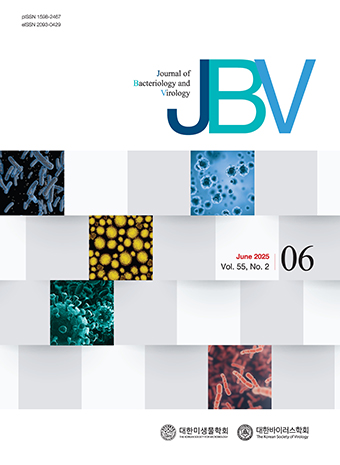 JOURNAL OF BACTERIOLOGY AND VIROLOGY
JOURNAL OF BACTERIOLOGY AND VIROLOGY
